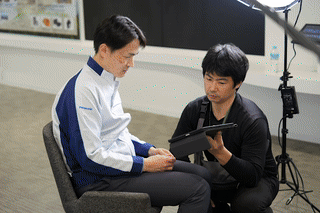The JStories staff, from a variety of backgrounds, found and photographed things in the city’s streets that were somehow uniquely Japanese or had innovative ideas, ranging from things that have existed in Japan for a long time to things that only exist now, in May 2025. In these everyday scenes, ideas for innovations originating in Japan may emerge, leading to solutions for global problems.

JStories – Drawing over 200,000 visitors in past editions and generating widespread attention on social media, the Tokyo Night Market is quietly redefining how Tokyo spends its evenings. For the first time, the event extended into the late hours of the night at Yoyogi Park, one of the city’s largest and most centrally located public parks, operating until 10 p.m. With a theme centered around Tokyo’s take on the traditional Asian night market, the event is reshaping expectations of what public spaces in Japan can become after dark. This summer, a new iteration, titled “The Star and Sun Market,” is already in the works, hinting that Tokyo’s nights are quietly discovering a new rhythm.
***
A soft glow began to blanket Yoyogi Park in late May as the sun set, signaling the start of the five-day-only event. Despite its short run, every detail of the setup is carefully curated: neatly lined food stalls, warm ambient lighting—it feels festive, yet effortlessly part of everyday life.

The theme of this event is “Tokyo meets other parts of Asia”. And the food is at the heart of the experience. Thai green curry, Vietnamese pho, Taiwanese xiaolongbao (soup dumplings), regional Fukushima ramen, various creative burgers, and grilled oysters. Each stall offers dishes with distinct flavors, yet they naturally coexist side by side, creating a harmonious atmosphere.

For visitors used to the jostling chaos of traditional night markets across Asia, this felt almost serene. As someone born in China, the word “night market” conjures vivid memories: tight crowds, skewers in hand, noise and heat blending together. But Tokyo’s version was more measured. There was space to breathe. Wide walkways let people stop, chat, or simply take in their surroundings. In that moment, even my sense of what “bustling” means began to shift.
The event’s design encouraged exploration. Food zones were balanced with live music areas, game booths, and resting spaces laid out with intention. A small stage near the center featured evening performances starting around 6 p.m. Acts ranged from Charan-Po-Rantan, a duo known for blending retro Japanese Showa-era flair with cabaret pop, to percussion collectives like Buddha TOKYO, lyrical school, and LA SEÑAS. Their rhythms carried on the breeze, giving the night its own pulse.

What surprised me most: many people weren’t even eating or shopping. Many simply sat and relaxed, listening to the music or chatted the night away with friends. Others strolled quietly, soaking in the evening. The market had created something rare in Tokyo: a space where doing nothing felt natural and valid. This wasn’t just a pop-up market. It was a quiet proposal: How might we reclaim the city at night?

Another significant aspect is that the market stays open until 10 p.m.— a first for Yoyogi Park. It’s not just a logistical change, but a symbolic one: a quiet declaration that freedom can exist at night in Tokyo too.
Perhaps most memorable was the atmosphere. It didn’t try to imitate the traditional night markets across Asia, nor did it lean heavily into Japanese aesthetics. Instead, there was a gentle blend that allowed everyone to move at their own pace. You could dive into noise, or simply stroll quietly. That freedom stayed with me.
While maybe not a destination that demands a visit, it’s exactly the kind of place where a quick stop turns into an unexpectedly long stay. With the Sun and Star Market coming in July, it’s hard not to be curious about what’s next.
For me, this wasn’t mere cultural nostalgia. The night reminded me: liveliness isn’t only about noise or crowds. Even in quiet moments — resting on a bench under warm lights — you can feel life all around you. This night in Tokyo showed me this in its own gentle way.

Translated by Anita De Michele | JStories
Edited by Randy Wagenheim | JStories
Top video: Alexandre Cas, Moritz Brinkhoff | JStories
For inquiries regarding this article, please contact jstories@pacificbridge.jp
***
Click here for the Japanese version of the article.




![[Podcast] Japanese technology to supercharge human fertility (Part 1)](https://storage.googleapis.com/jstories-cms.appspot.com/images/1765440905082unnamed_bigthumbnail.jpg)
_bigthumbnail.jpeg)




![[Interview: Part 1] From nourishing souls to feeding the hungry](https://storage.googleapis.com/jstories-cms.appspot.com/images/1763695595492unnamed_bigthumbnail.jpg)



![[Interview] When digital and physical worlds meet](https://storage.googleapis.com/jstories-cms.appspot.com/images/1747974430456unnamed-2_smallthumbnail.png)




_smallthumbnail.jpeg)

![[Interview: Part 1] From nourishing souls to feeding the hungry](https://storage.googleapis.com/jstories-cms.appspot.com/images/1763695595492unnamed_smallthumbnail.jpg)

